What is Alopecia Areata?
Alopecia areata is a condition best described as patchy hair
loss. This happens as the immune system mistakenly attacks hair
follicles (the part of your body that makes hair), causing
inflammation.
This attack on a hair follicle causes the attached hair to fall out.
Researchers
do not fully understand the causes of alopecia areata, but they
believe that both genetic and environmental (non-genetic) factors play
a role. While it is typically the loss of head hair that occurs, hair
elsewhere on the body can also be affected, such as the eyebrows,
eyelashes, facial hair, etc.
Alopecia areata affects as many as 6.8 million people in the U.S.
(approximately 2% of the population). Hence, it is a fairly common
condition affecting many people all over the world.
My Personal Experience

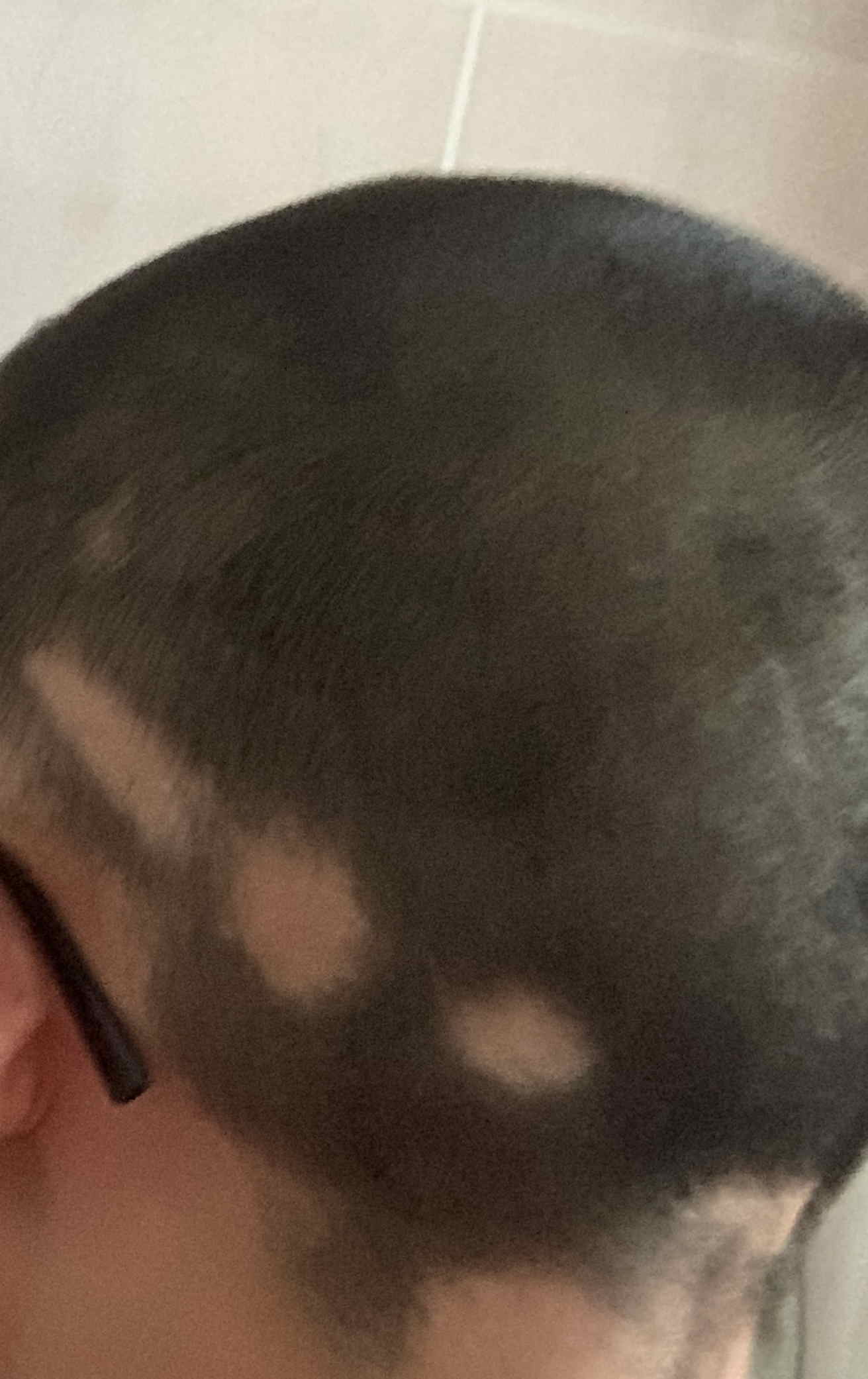
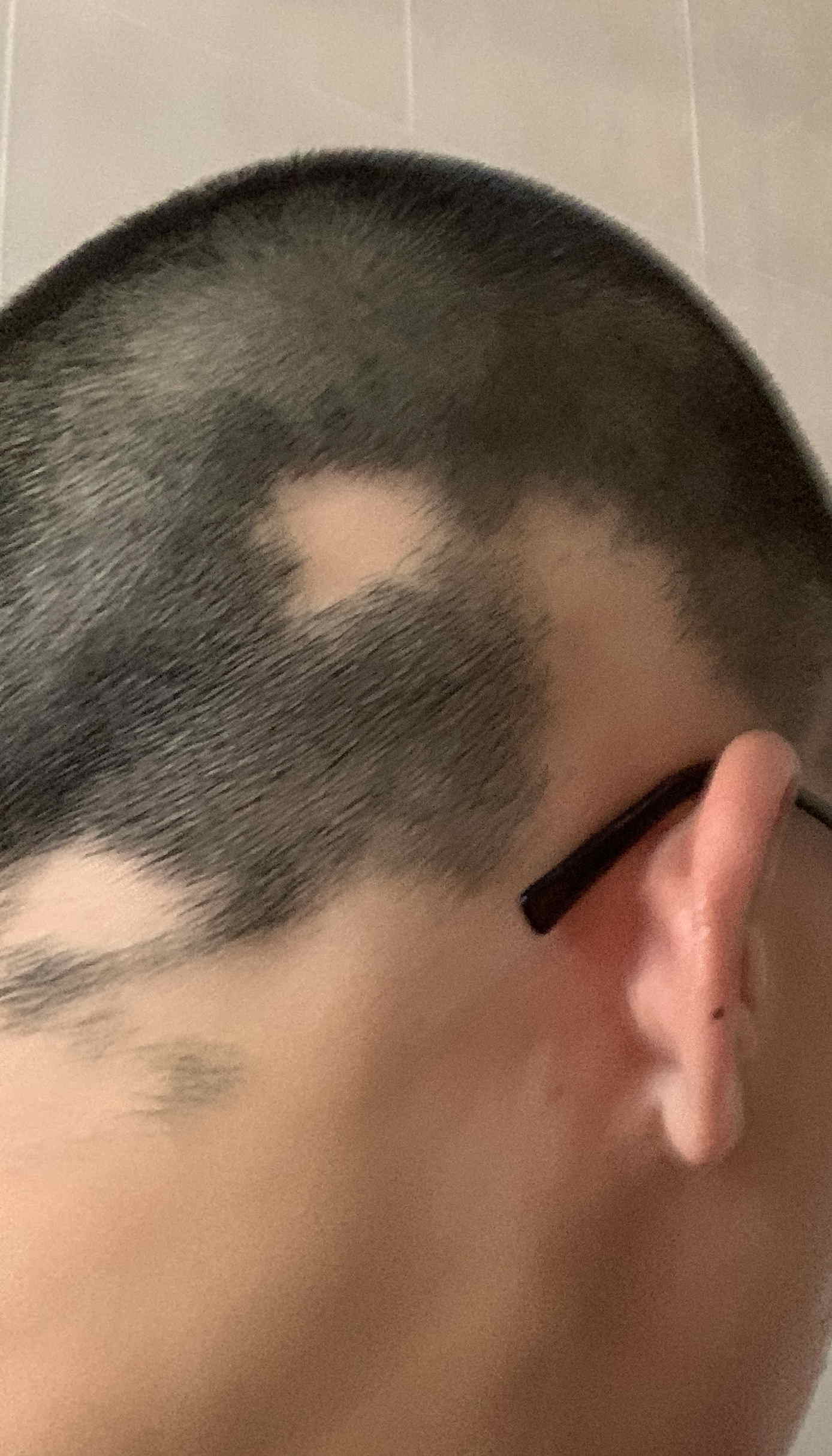
First signs
At 14, two bald spots started appearing at the back of my head, near
the neck. I did not think much of it. While friends and family members
pointed it out, it did not affect me much, especially since it was not
visible to me when I looked at the mirror.
A few years later, at 16, those spots remained the same. However, new
bald spots appeared, and they were obvious this time. I was seeing
more hair loss when washing my hair, and on the pillow. The bald spots
were no longer in blindspots, and it became evident to me that
something was happening.
To the doctor
At some point, the bald spots became too rampant and obvious to be
ignored. Seeing a dermatologist confirmed that I was experiencing
alopecia areata.
One possible cause that was brought up was stress. Preparing for
national examinations in school, my stress levels were rather high.
Furthermore, I was genetically predisposed to autoimmune diseases.
Many of my family members suffered from autoimmune conditions like
hyperthyroidism or hypothyroidism, and I too had just recovered from
hyperthyroidism. There was a strong link between the hyperthyroidism I
experienced promoted the onset of
alopecia areata.
Treatment
Much to my dismay, the dermatologist said that there was no current
cure to the condition. While there were some treatment options, none
of them would completely cure the condition. Nonetheless, I gave them
a try.
I was first prescribed topical Minoxidil. It is a solution applied to
the scalp, specifically the bald spots, to stimulate hair growth.
Twice a day, I religiously applied Minoxidil to the bald spots,
praying that it would help. After weeks of consistent application,
nothing happened. There was no hair growth at the bold spots, and as a
matter of fact, new spots had started appearing.
Returning to the dermatologist, I was then introduced to steroid
injections. The dermatologist would inject a type of steroid
medication directly into my scalp, which would help with the hair
loss. The steroids would counteract and stop the immune system from
harming the hair follicles. After several sessions, some improvements
were seen, with hair growth seen in some spots. However, it was
largely ineffective, as most spots did not respond to the injections,
and remained bald. Furthermore, this treatment of injections involved
regular appointments, once every 2 weeks. This meant that I had to
miss many days of school, and treatment was also rather pricey.
Ultimately, steroid injections are not a long term cure for alopecia
areata. Being injected to the specific spots helps prevent further
autoimmune attacks at the spots, but does not prevent new bald spots
from developing in other areas. It is not a complete cure for the
condition.
Seeing its relative ineffectiveness, the dermatologist then introduced
me to Prednisolone. Prednisolone is an ingredient in corticosteroid
medications. Corticosteroids, a synthetic version of cortisol, helps
to reduce inflammation in the body or suppress the immune system. By
far, this was the most effective treatment for me. Within a few weeks,
hair growth was seen in most bald spots. I was ecstatic, given that I
was facing one of the worst periods of the condition.
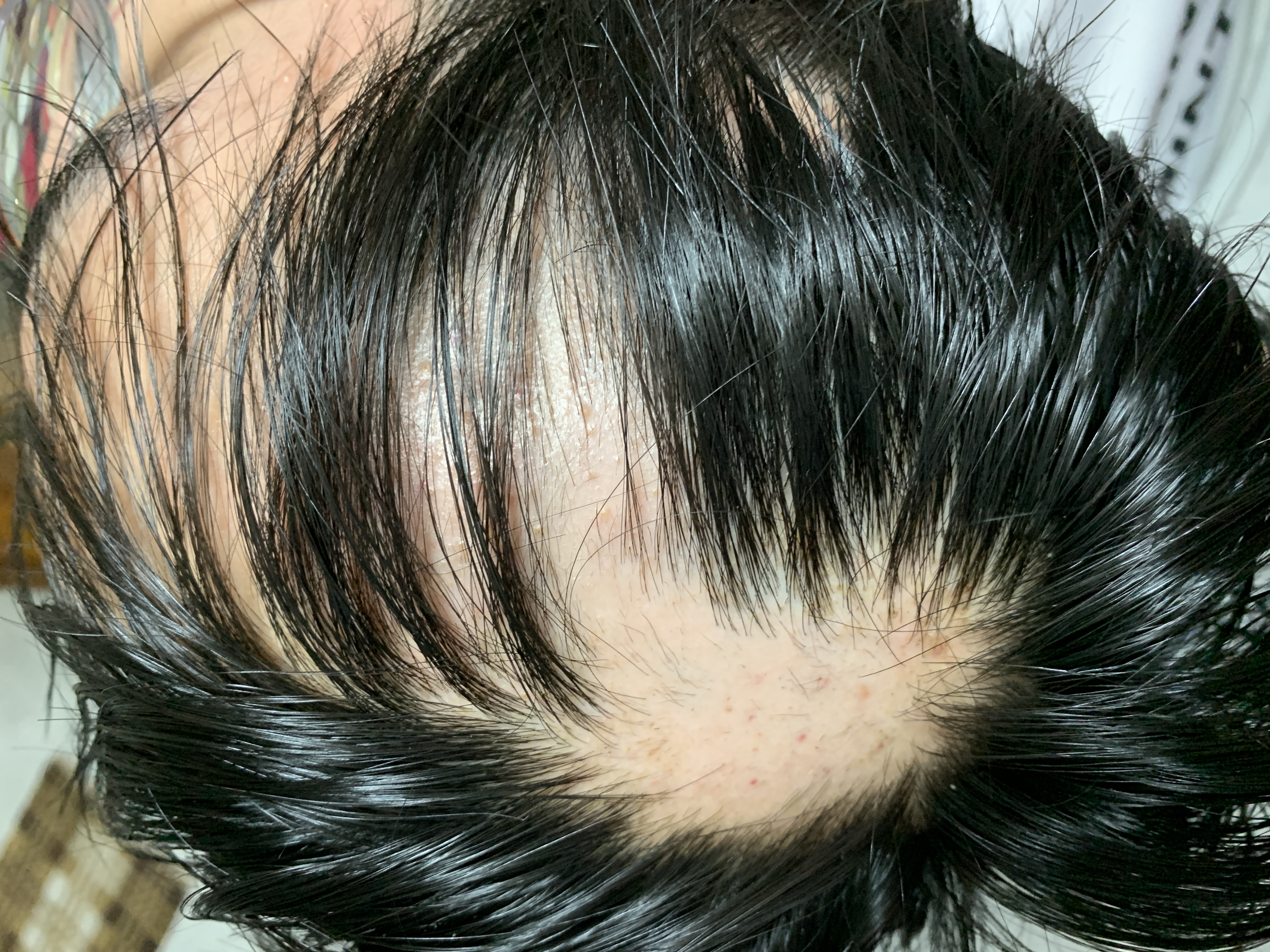
However, the side effects of Prednisolone meant that I had to quickly
taper off my intake of the medication. With severe
side effects
that could develop from a weakened immune system, I was off
Prednisolone after a month or so. Nonetheless, most of my bald spots
now had hair growth. (Note: another side effect of Prednisolone is
acne due to the effects on
hormonal balance. I personally suffered from really bad acne during the period and
several months after consumption of Prednisolone.)
Recurrence
While I was greatly satisfied with the effectiveness of Prednisolone,
I knew that it was still not a complete cure, and bald spots could
return once again. Taking another round of national examinations
several months after the treatment of Prednisolone, stress levels were
at an all time high.
Just as I expected, another bald spot developed.
This time, I decided not to seek treatment.
Minoxidil had proved to be highly ineffective. Steroid injections
simply took too much time, and its effectiveness was questionable as
well. Prednisolone was out of the picture. I did not want another
outbreak of acne that I had just got over.
This left me with no other treatment, and once again, I chose to live
with the bald spots. Eventually, I found that having longer hair was a
sufficient solution to the bald spots.
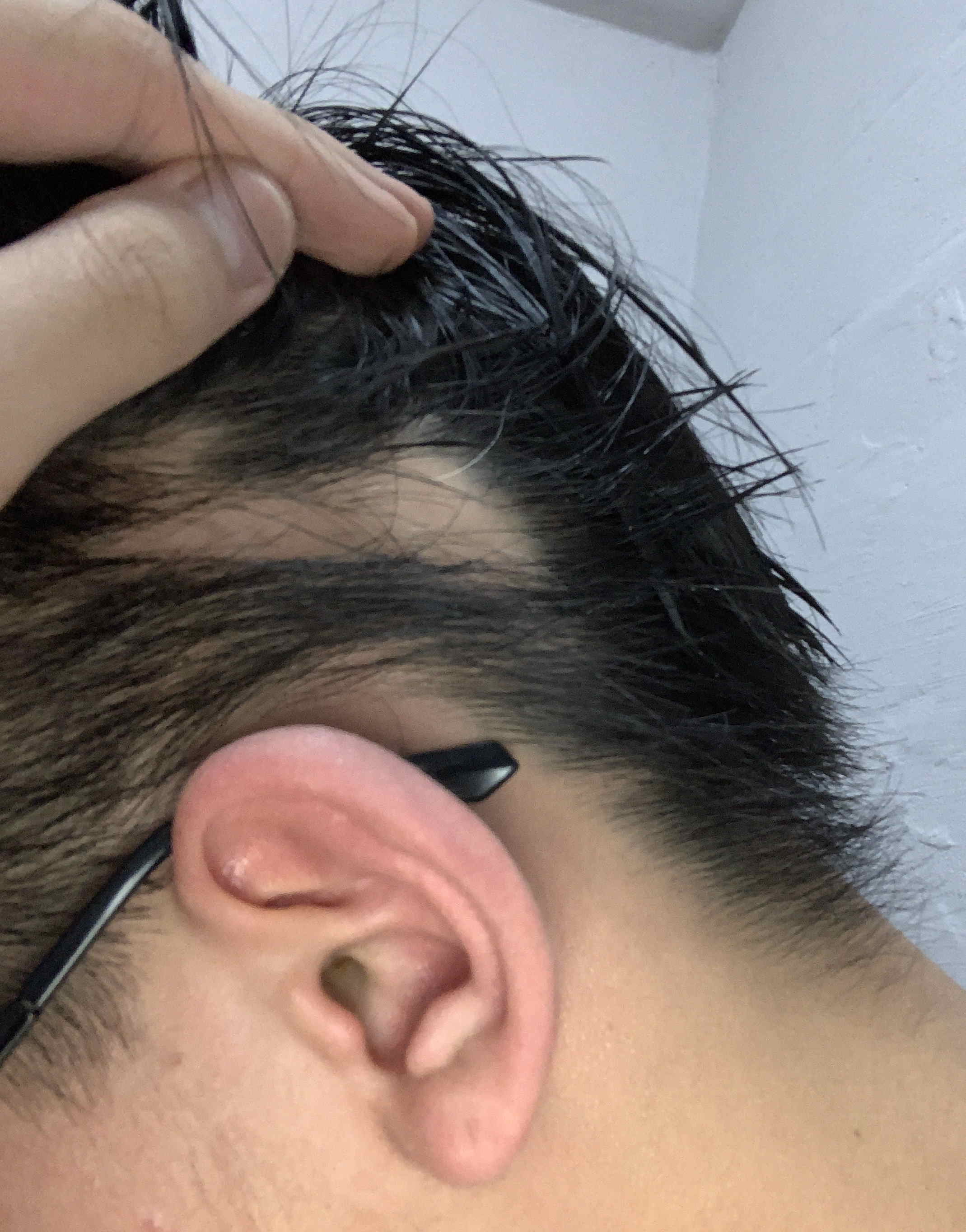
Current treatments
1. Minoxidil
Minoxidil is a medication applied to the scalp to promote hair growth and slows down the balding process. However, it does not tackle the root cause of the issue, the immune system attacking hair follicles.
2. Corticosteroid Injections
Corticosteroid medication is injected directly into skin where the hair loss is present. While steroid injections do aim to prevent the immune attack, its effectiveness is far from desirable. It only prevents hair loss on already bald spots, not preventing newer spots from developing. Furthermore, the regularity of treatment is a hassle.
3. Prednisolone
Prednisolone or other sorts of corticosteroid medications do effectively tackle the root cause of alopecia areata, preventing the immune attack on hair follicles. To quickly explain how corticosteroids work: corticosteroids mimic natural hormones like estrogen and testosterone. This interferes with our bodies normal production of hormones, affecting the balance of hormones. Since most alopecia areata sufferers face an imbalance in hormonal levels, the corticosteroids in a way re-balance the levels, preventing further immune attacks on hair follicles. However, it is not a long-term treatment as response to the medication stops within a few weeks of discontinuation. Not to forget, its side effects make it a worrying treatment.
4. JAK Inhibitors
JAK (Janus kinase) inhibitors help stop certain biological reactions and protein interactions, which helps stop inflammation. Since originally used to reduce inflammation in rheumatoid arthritis, it could help reduce inflammation in the scalp, which would help with alopecia areata. In June 2022, the first JAK inhibitor was approved by FDA in the USA to be used as a treatment for alopecia areata. Baricitinib, a JAK inhibitor, is sold in pills called Olumiant. While I have never personally undergone this treatment, a subreddit shows that JAK inhibitors have potential to be an effective treatment. However, the severe side effects of weakening the immune system and causing the user to be prone to infections is worrisome. Serious infections, including tuberculosis, shingles, and others caused by bacteria, fungi, or viruses. Some people have died from these infections. People taking a medicine in the class of medicines called JAK inhibitors have a higher risk of certain cancers, especially if you are a current or past smoker.
To summarise, the current treatments that one can get are either
ineffective or not long-term, given the possible severe side effects.
Discovery of what worked
While doing research in an attempt to understand
alopecia areata, I discovered a possible cause:
inflammation.
In this case, it would be the inflammation of the scalp which leads to
the attack on hair follicles. Seeing this connection, I wondered if
preventing inflammation would help with the condition. I then came
across an
article
which mentioned that having the right diet could help with
inflammation. While mostly mentioned to be effective against
arthritis, I figured I would give it a try.
An anti-inflammatory diet, one common one being the
Mediterranean diet, would perhaps be the right solution. A diet not
only effectively tackles the root cause of alopecia areata,
inflammation, but it also is a long-term solution, with no worrying
side effects.
The diet
Following the Mediterranean diet, I eliminated red-meat from my diet,
and nourished myself with fish, legumes, vegetables, fruits, nuts,
etc. I also decided to cut out refined carbohydrates, opting for
wholemeal grains, and stayed away from processed and fried foods.
Like any diet, it was not easy to stick to it. While I did not keep to
the diet flawlessly, I made the conscious effort to avoid refined
carbs if I dined out, and kept my intake of processed foods to a
minimum.
The results
Over the span of 3 months, I stuck to the diet as closely as possible,
as an experiment to see if the diet would work.
The photos below show the results.
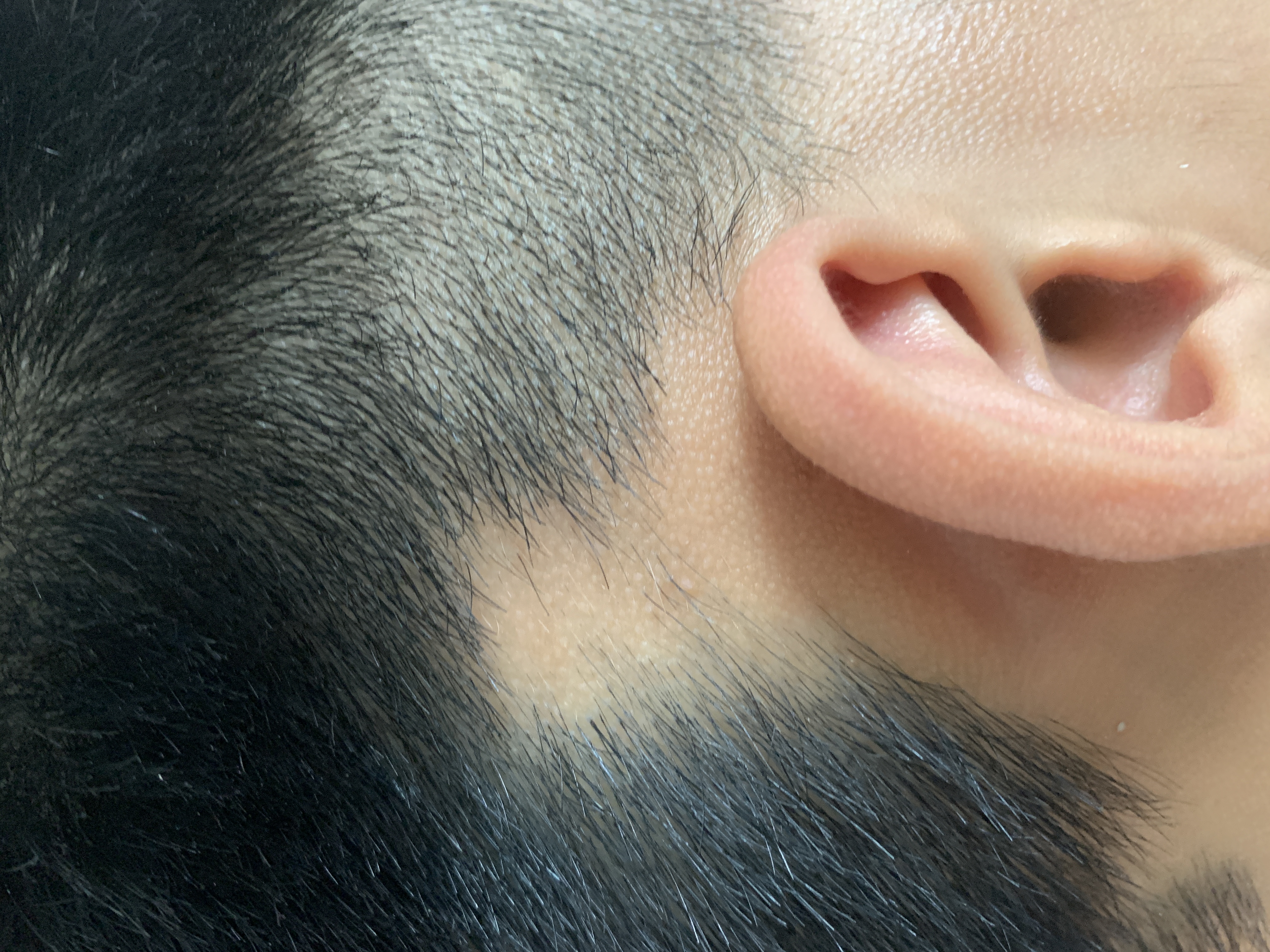


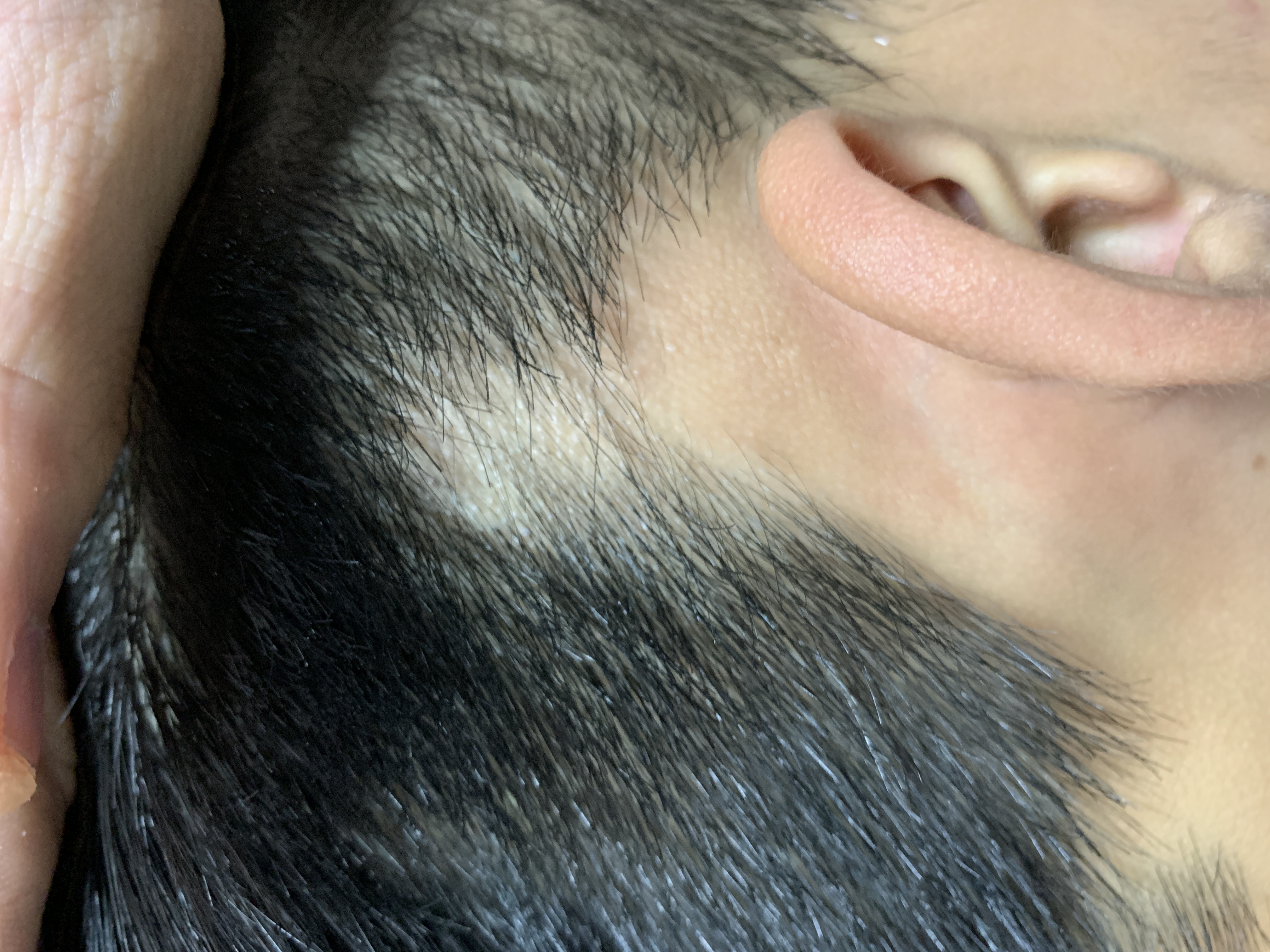
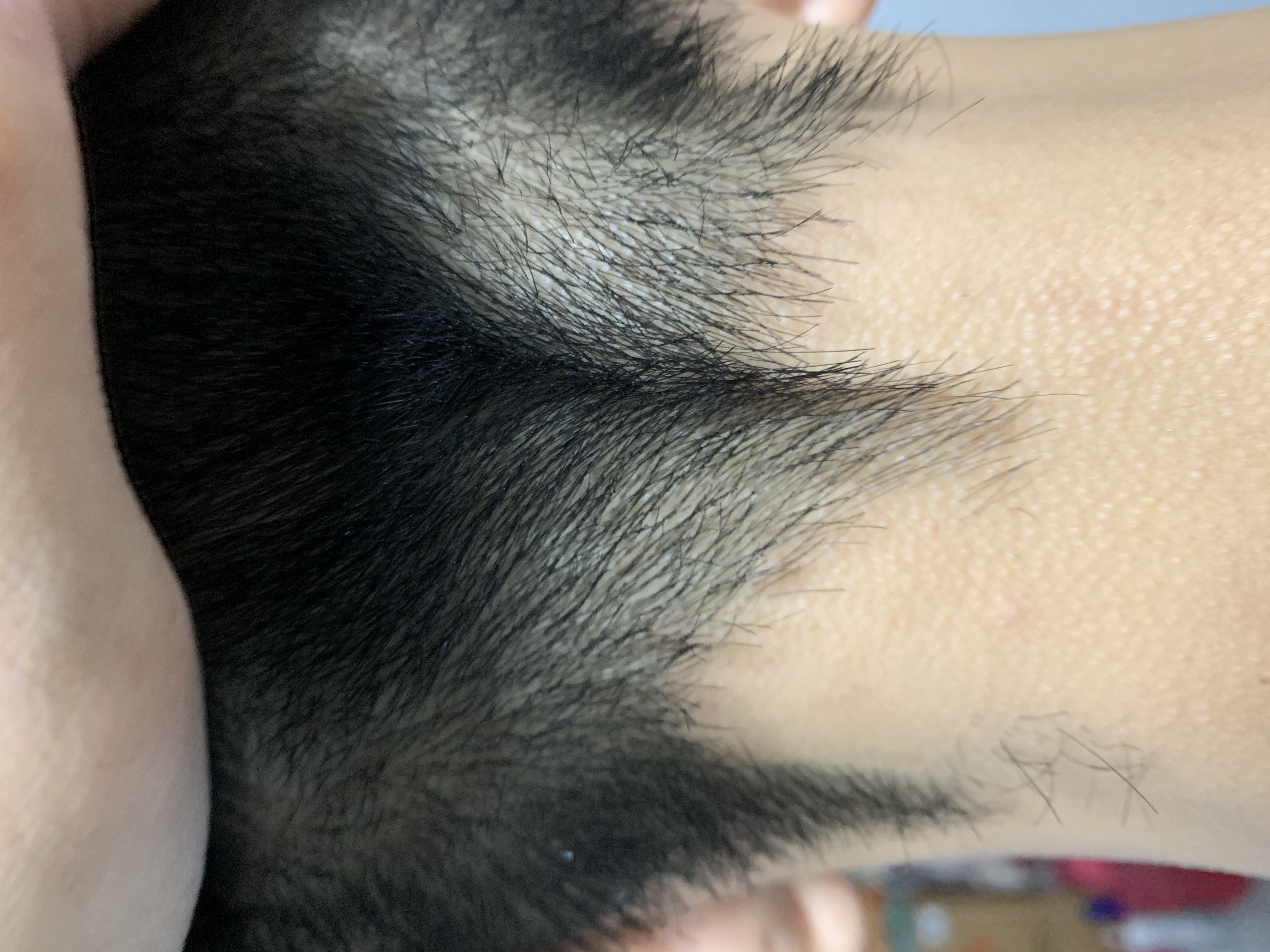


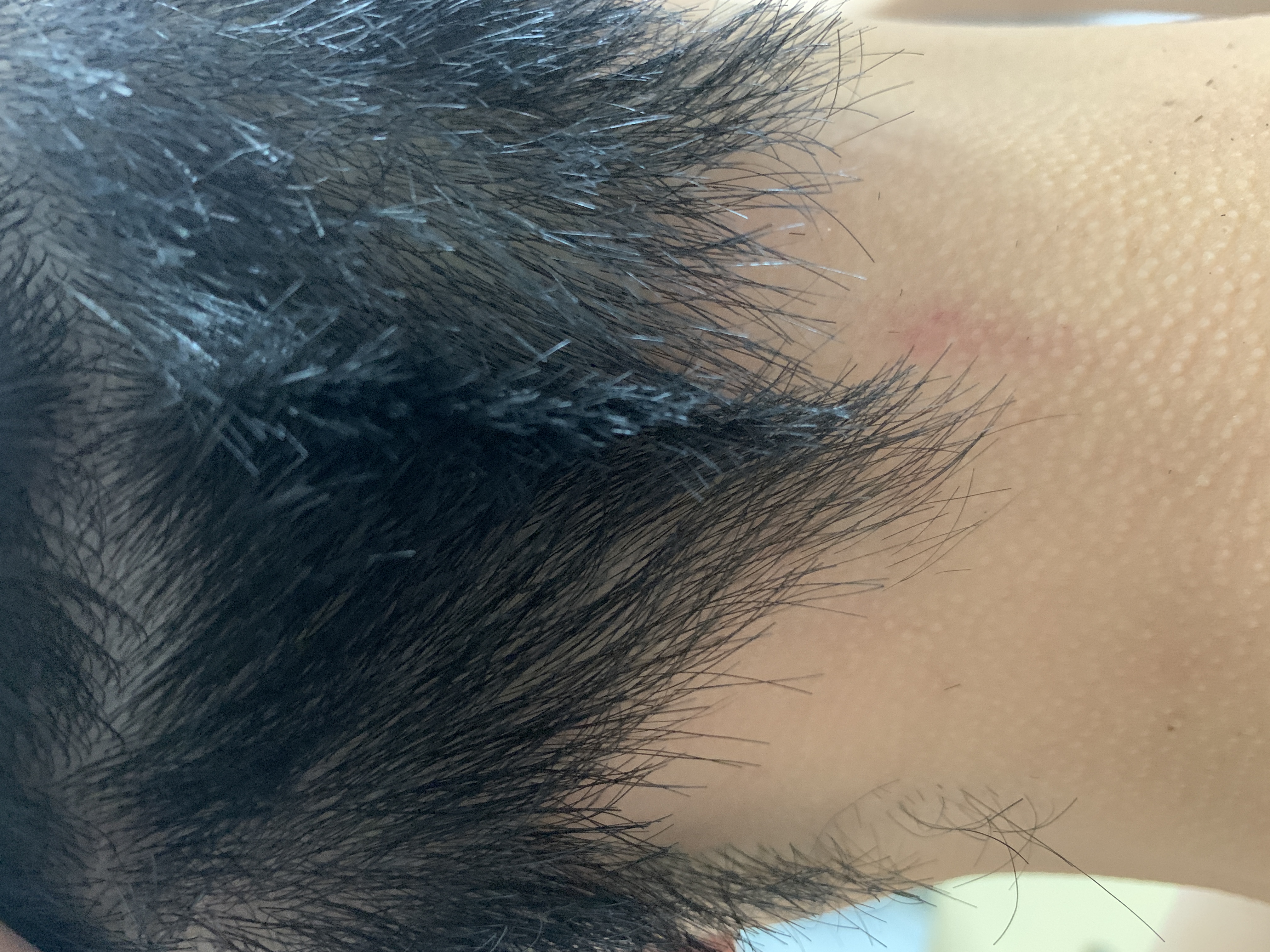
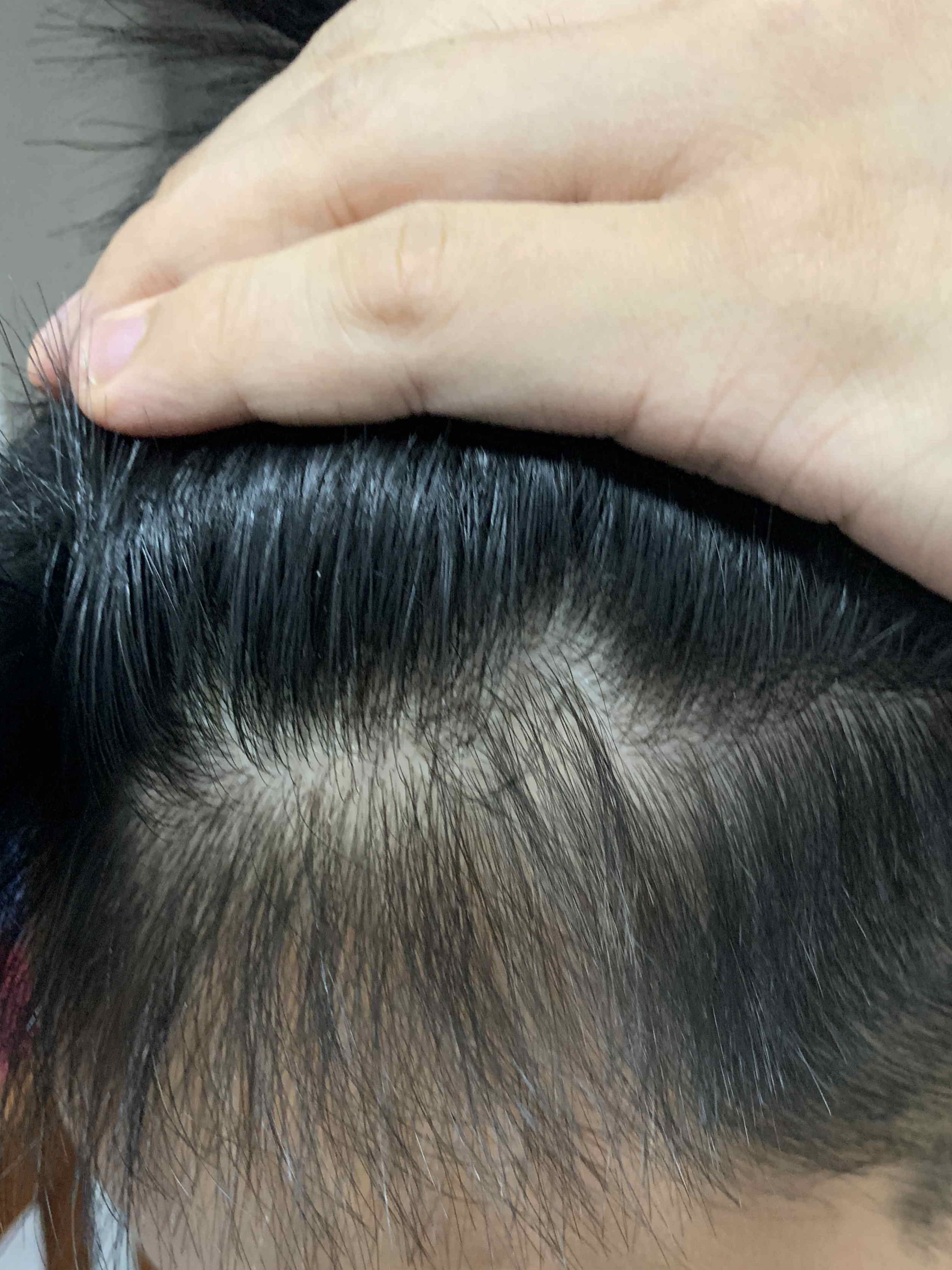
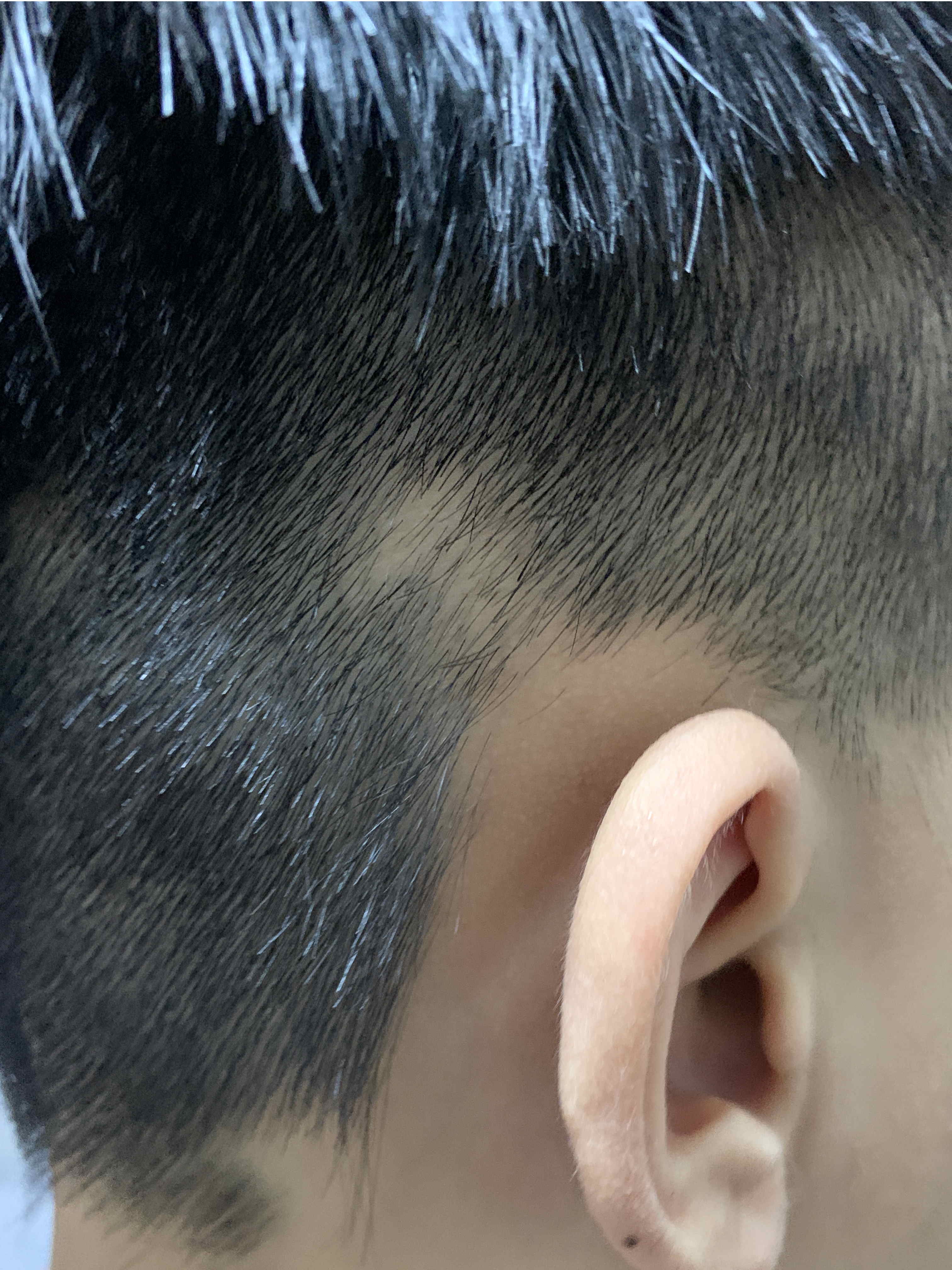
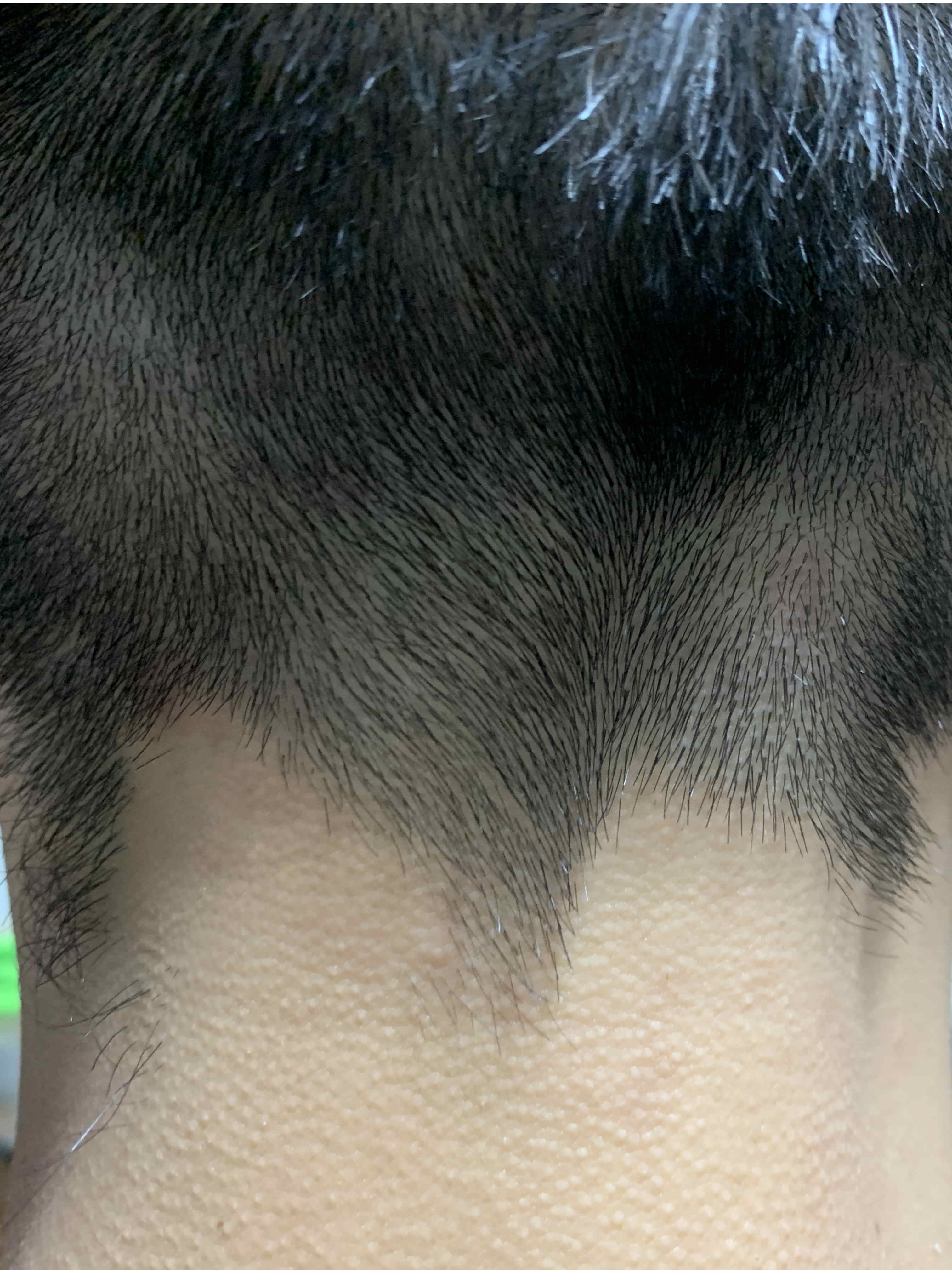
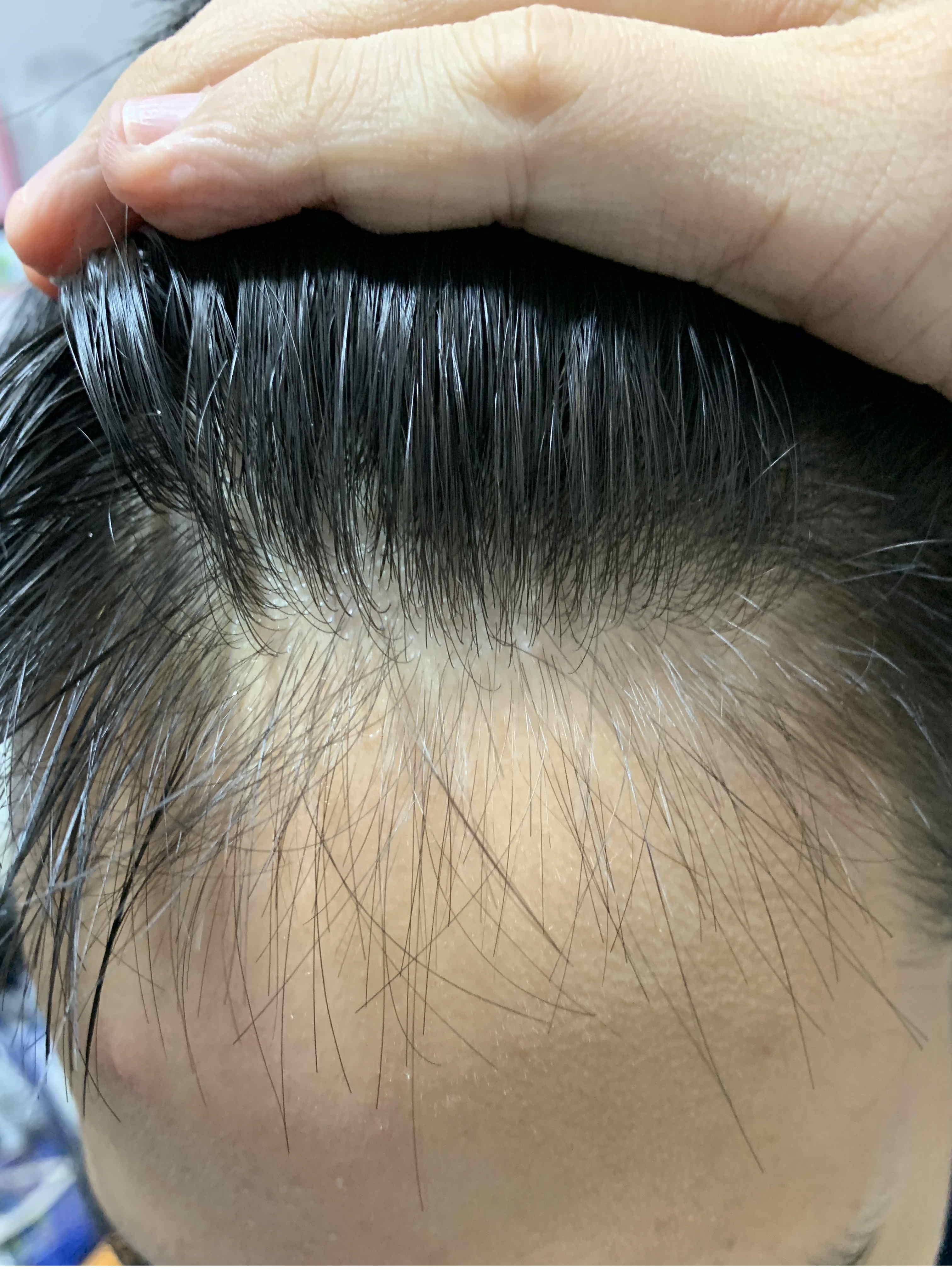
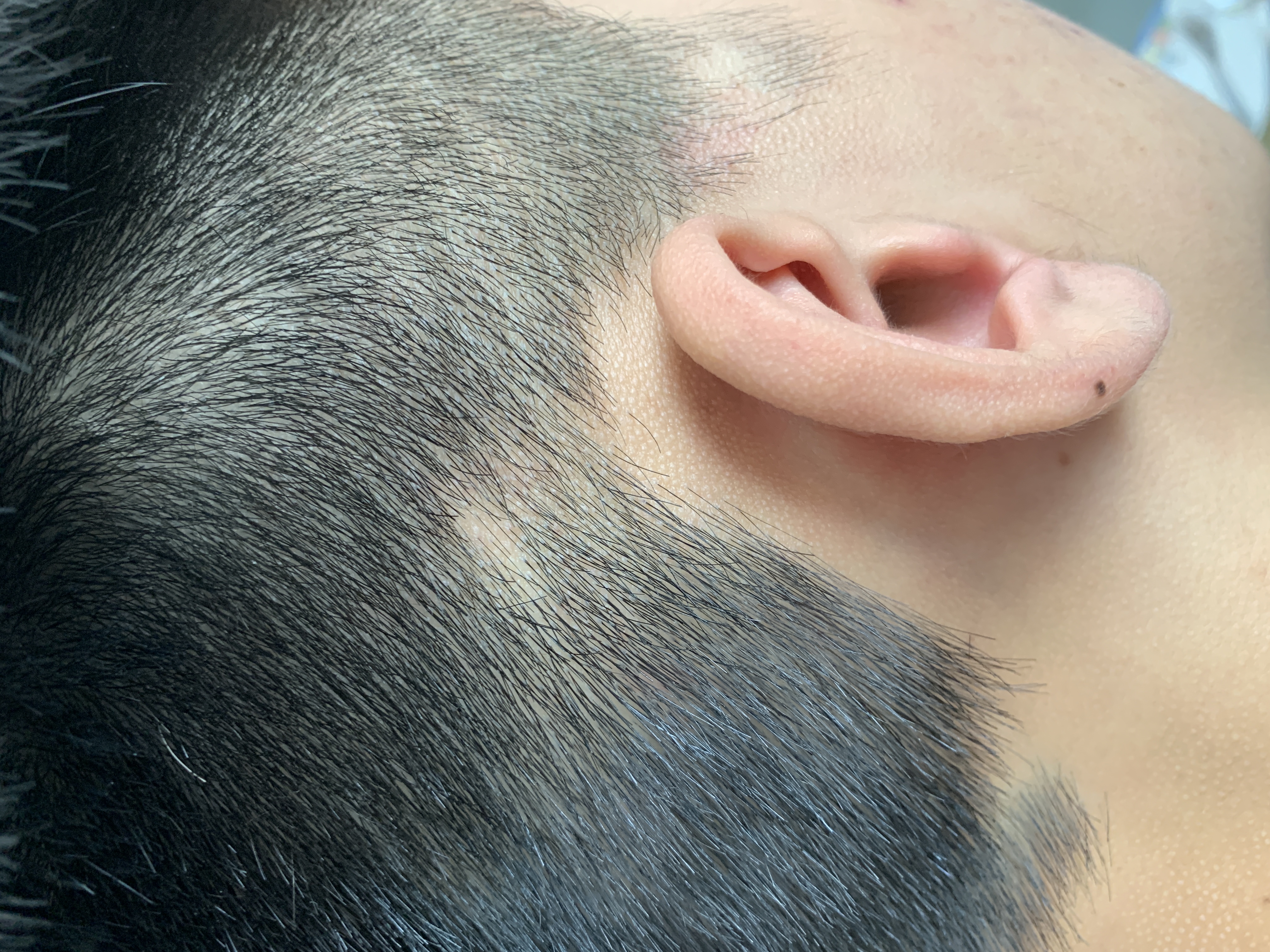
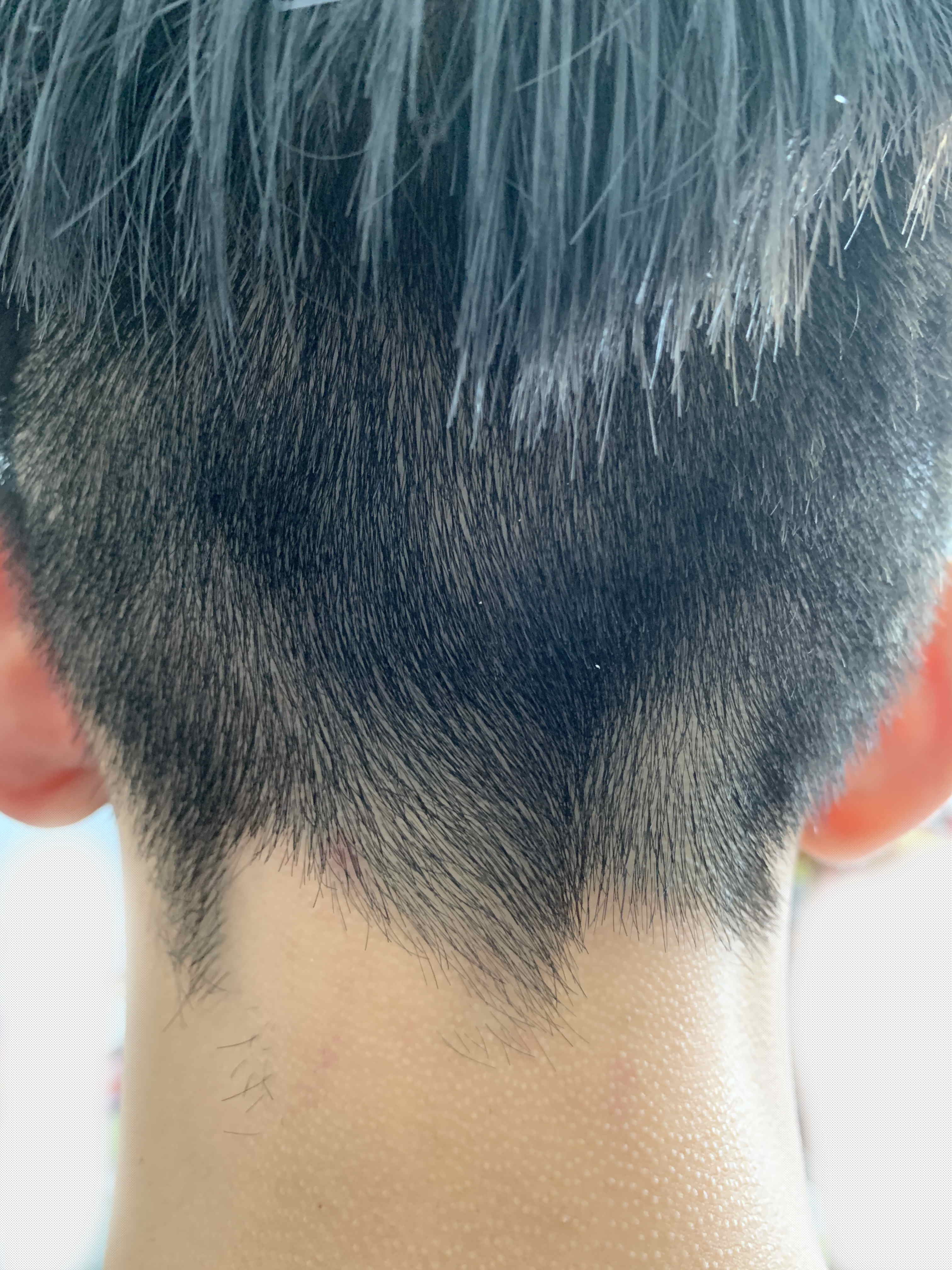
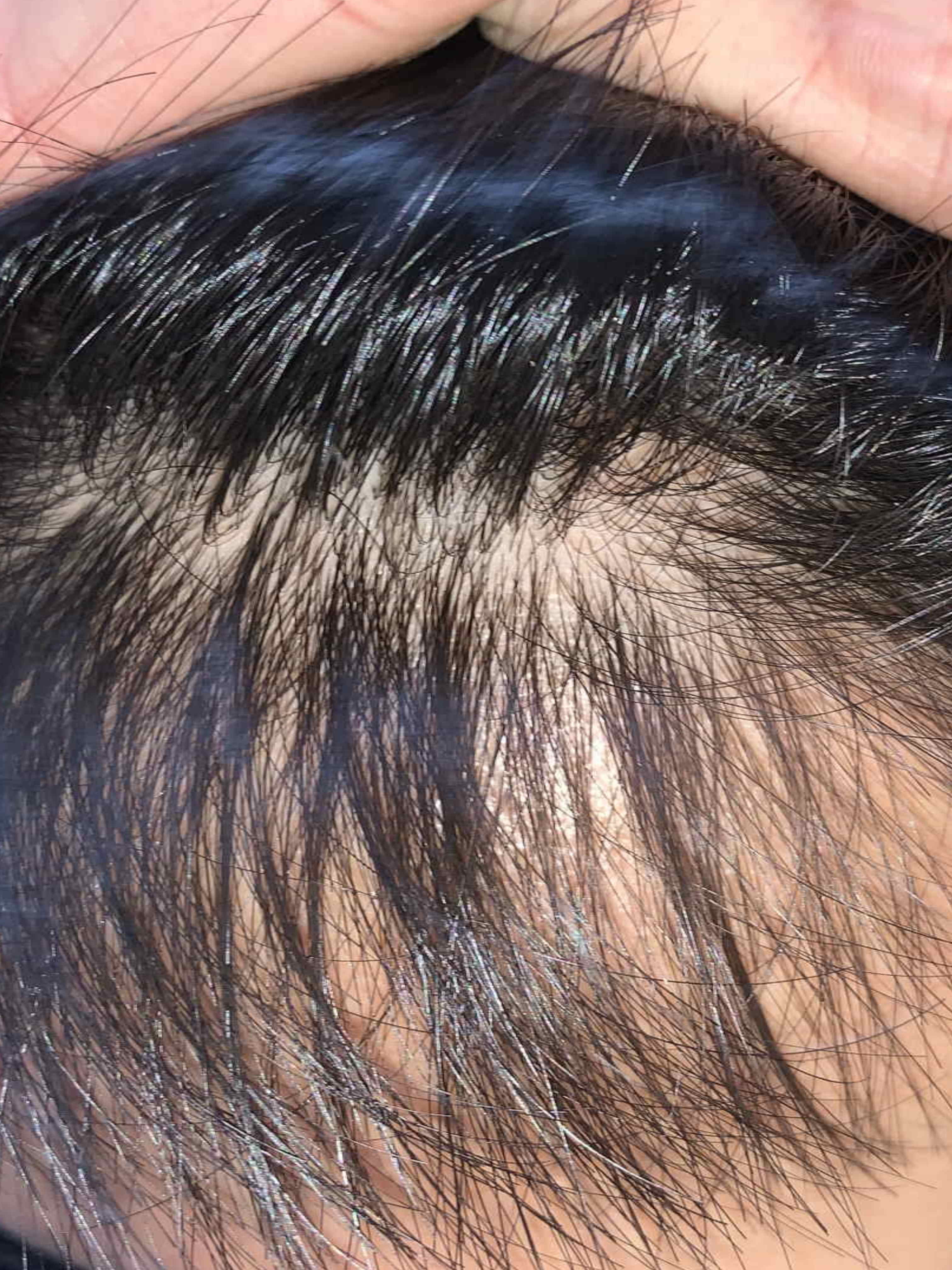
The diet seemed to have helped with the regrowth of hair. (Note: I was
not on any other treatment at this time, it was just the diet.) More
importantly, it seemed like the diet helped prevent further hair loss
as I observed little to no hair falling out.
In an attempt to test if the diet was really the factor helping with
the condition, I took a month off the diet. While this experiment is
far from perfect, it did appear that I was suddenly losing more hair,
and eventually a new spot emerged.

While my experiment cannot confirm that a non-inflammatory diet is a
treatment for alopecia areata, it is one that has worked for
me. Along with its general health benefits, there are no drawbacks to
keeping to this diet.
In conclusion, I think that the best solution to alopecia areata is
not any of the current treatments that one can get.
Undoubtedly, they have been proved to be able to help with the
condition and stimulate hair growth, and even prevent further hair
loss. However, they are not long-term solutions.
Something as simple as eating healthily, keeping to a
non-inflammatory diet, as well as minimising stress in
your lifestyle may be a better solution, and is definitely one I will
work towards.
Update: Another possible cause
As I continue to learn more and more about this condition, I found that a possible cause could be a rise in cortisol levels. High cortisol levels could be due to increased stress levels, which matches what my dermatologist mentioned during consultations. Cortisol, being a glucocorticoid hormone produced by the adrenal glands, can be a cause of alopecia areata. As extra cortisol is being produced, less of the hormones which support healthy hair growth is produced. At the same time, cortisol is known to affect the function and cyclic regulation of the hair follicle.
Other than stress, not eating enough (caloric deficit) and regularly (e.g. intermittent fasting) can also lead to a spike in cortisol levels. As such, it may be important to not only keep to a clean diet, but at the same time ensure that caloric intake is sufficient and that we are eating regularly, to prevent spikes in cortisol levels which could be a contributing factor to alopecia areata.
References
In my research, I came across plenty of articles and studies which have been immensely helpful in allowing me to piece together what alopecia areata really is. References to these articles are sprinkled across this webpage, and I will add the links below as well. Without these articles and studies, I would not have been able to get a better grasp on this condition, and I am very thankful to the authors and scientists who have shared all their knowledge.American Academy of Dermatology Association
National Institute of Arthritis and Musculoskeletal and Skin Diseases
Prednisolone Pharmacist
Cleveland Clinic
Cleveland Clinic & George Washington University
Dutch Test
Health Hub
Midland Skin
Health Direct
National Library of Medicine Pub Med Ramot
National Library of Medicine Pub Med Tomiyama
National Library of Medicine Pub Med Hye Kim
Olumiant
Harvard Health Publishing
Contact
If you have any questions / want to share anything regarding Alopecia Areata, feel free to send me an email!